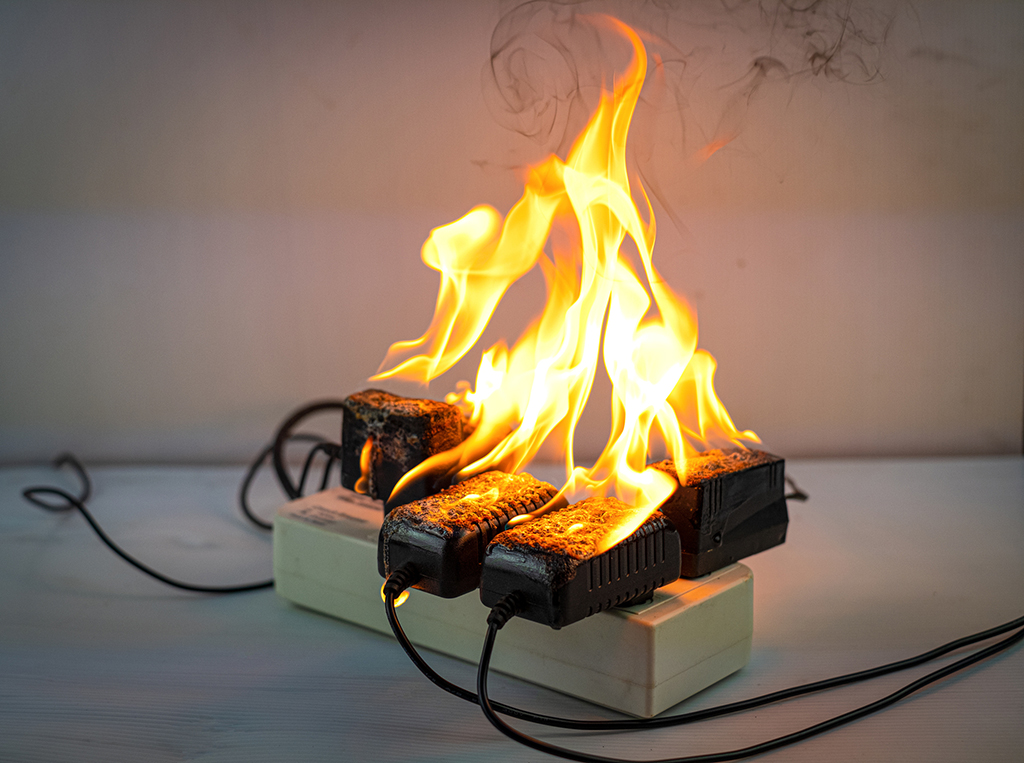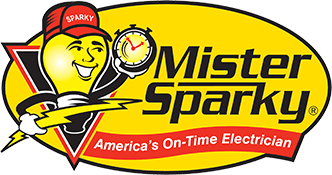
7 Electrical Fire Hazards In Your Home And When To Call For Electrical Repair | Wilmington, NC
Photo By chonticha wat at istock
Wires, cords, and chargers. Oh, my! Electrical Repair is a need.
In our hectic days, we barely give any thought to all of the crisscrossed tangled messes we can make of our charger cords and power strips. We can barely remember to switch that laundry around. And the dryer’s lint trap? What lint trap?
Mister Sparky of Wilmington wants you and your family to be safe from any and all electrical hazards in your home. The following is a list of seven dangers to keep top-of-mind. Do a quick walkthrough of your house — take your kids and teens with you — and see if you need to call for an electrical repair before things get even more hectic.
1. Too Many Devices Plugged Into One Socket
We mentioned this in the intro. Avoid overloading one outlet with multiple devices. You may be able to get away with a power strip for items that don’t produce heat (like phones and tablets), but be sure the cords stay straight so you can see what’s happening. A curious set of little fingers or a chew-happy pet can cause a problem really quickly.
Definitely avoid using power strips with appliances that do generate heat. Crockpots, microwaves, and toaster ovens definitely deserve their own power sources. So do hairdryers, curling irons, and space heaters. Spread the love around to different outlets (preferably on different circuits) and avoid the risk of electrical fires and circuit overloads and causing need for electrical repairs.
And plugging in one power strip into another, into another, into another? Nope. That’s like wishing for more wishes and is a rule-breaker for sure.
2. Demanding Too Much Current From Old Wires
Modern times call for modern devices. It’s not unusual for families to have multiple television, computers, and laptops running all at the same time on top of the load the house once carried in its pre-technology days. Wilmington, NC has some nice old homes. Just be sure to consult an electrical repair professional to inspect the wires and the breaker box.
Expert homeowner tip: While the pro has a look, ask which outlets run on the same circuits so you can avoid overloading them, as mentioned above.
3. Getting by with Frayed Cords
Exposed bare wires create spark and fire hazards. Replace the cords on your appliances (and these days, depending on the appliance, a new toaster is cheaper than a repair job). Toss out extension cords and power strips that the new puppy gnawed through or the vacuum cleaner mangled. The risk of fire is not worth the price of a new cord.
4. Using Outdated or Vintage Gadgets
Great-Grandma’s vintage ’60s clothes iron is likely an electrical hazard if it still has its original cord. And, vice-versa: using a brand new appliance with a three-pronged plug in an outdated wall socket is no good, either.
On the note of mixing the old and the new? Don’t pull that third prong off a cord to jam it into a wall socket meant for plugs with two prongs. The third prong is there to tackle the extra energy the appliance requires, and those outdated wall outlets won’t do. It’s time to call for an electrical repair pro to update the home’s outlets.
5. Using Extension Cords as Outlet Converters
This goes along with number four above — trying to mix and match two- and three-pronged plugs with outlets that don’t match your needs. It’s best to call for an electrical repair and update your sockets to the demand of your needs rather than risking a fire with overloaded cords.
At the same time, ask your professional to install another outlet or two if possible. This may eliminate the need for extension cords together.
If you must still use an extension cord, don’t run it under carpet or furniture where it can become frayed or pinched. This could ignite a spark and cause serious issues.
6. Installing the Wrong Watt Bulbs
We all like our workspaces and reading corners to be well-lit, but demanding a lamp designed for a 40-watt bulb pump out the juice for the 75-watt shine just isn’t realistic.
Run a check of lamps and lighting sources in your home and ensure the wattage on the label or cord matches the wattage on the bulb. While you’re at it, you could opt to update all the bulbs with energy-efficient ones and save some money in the long run.
7. Ignoring Warning Signs That an Outlet Needs to be Replaced
Forgo using outlets that are giving you red flags that they’ve exceeded their lifespan. Things like sparks, heat, smoke, and blackened covers are dead giveaways.
More subtle signs include cracked or damaged outlets that can let in debris and dust, plugs that fall out easily, buzzing, or flickering power. Also, it’s time to call for electrical repair if either half of a two-socket outlet is dead.
This goes for light switches, too. They shouldn’t buzz, and the switch should snap on and off tightly.
Be Prepared With the Basics
Savvy homeowners know the danger signs of electrical hazards and when to call in the professionals. Always keep an appropriate number of smoke detectors for the size of your home, and remember to change the batteries out when you change your clocks.
Fire extinguishers in the kitchen and garage areas are a must (just remember not to use water on an electrical fire).
Know where your breaker box is (make sure it’s unobstructed with a clear path to the box) and know how to turn off the main power in the event of an emergency. And keep your electrical repair pro’s phone number programmed into your phone and hanging on the fridge.
No matter the situation or request, Mister Sparky of Wilmington, serving Wilmington, NC and the surrounding areas, stands by to take your call for all your electrical repair needs and questions. Give them a call today.

